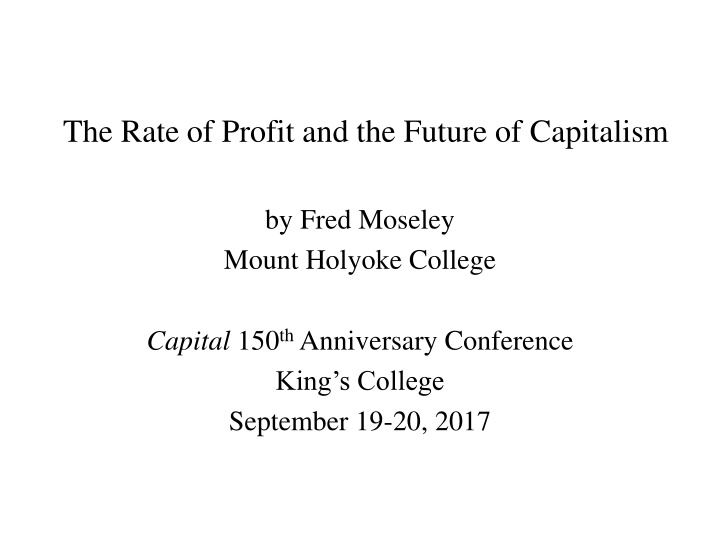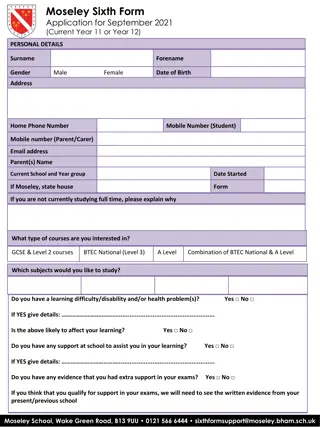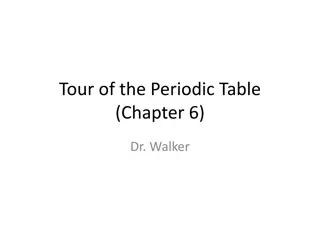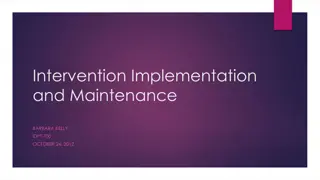
Rate of Profit Determinants in Capitalism
Explore the concepts of rate of profit, productive and unproductive labor, determinants of profitability, and shifts in employment and wages over time. Learn about the key factors influencing the profitability of capitalist firms and the interplay between labor types in the context of capitalism.
Download Presentation

Please find below an Image/Link to download the presentation.
The content on the website is provided AS IS for your information and personal use only. It may not be sold, licensed, or shared on other websites without obtaining consent from the author. If you encounter any issues during the download, it is possible that the publisher has removed the file from their server.
You are allowed to download the files provided on this website for personal or commercial use, subject to the condition that they are used lawfully. All files are the property of their respective owners.
The content on the website is provided AS IS for your information and personal use only. It may not be sold, licensed, or shared on other websites without obtaining consent from the author.
E N D
Presentation Transcript
The Rate of Profit and the Future of Capitalism by Fred Moseley Mount Holyoke College Capital 150thAnniversary Conference King s College September 19-20, 2017
Marxian rate of profit productive capital only MRP = S / (C + V) ~ S / C = (S/V) / (C/V) Cause of MRP: % (C/V) > % (S/V) Ways to MRP: (C/V) (S/V)
Productive and unproductive labor PL: labor that produces commodities and surplus-value UL: two main types: circulation labor: trade, accounting, finance, insurance, real estate no value is produced in exchange supervision labor: supervisors to top managers required to control labor of others profit of capitalist firms: = S U
Rate of profit of capitalist firms CRP = / K = (S U) / (Cp+ Cu) = (S/V U/V) / (Cp/V + Cu/V) Causes of CRP: % (Cp/V) > % (S/V) U/V and Cu/V Ways to CRP: Cp/V and S/V U/V and Cu/V
The rate of profit and its determinants, 1947-1982 S/V U/V Cp/V Cu/V RP 1947 1.40 0.54 3.58 0.30 0.22 1982 1.89 1.16 5.92 0.78 0.11 0.49 0.62 2.34 0.48 -0.11 Contb to RP .099 -.126 -.073 -.015
The rate of profit and its determinants, 1982-2010 S/V U/V K/V RP 1982 2.03 1.31 7.03 .102 2010 2.97 1.83 8.22 .138 1.19 .036 0.94 0.52 Contbn to RP .122 -0.68 -0.18 RS = 3.0: in an 8-hr WD, 2 hrs of NL and 6 hrs of SL
Decomposition of U/V U = (UL) (wu) (wu): average wage of UL V = (PL) (wp) (wp): average wage of PL U/V = (UL) (wu) / (PL) (wp) U/V = (UL/PL) (wu/wp) Two possible causes of U/V: (UL/PL) and (wu/wp)
Shares of total employment and wages, 1964-2010 Total unproductive labor
breakdown UL into two classes ULW:working class: non-supervisory labor in unproductive industries ULC: capitalist class: supervisory-management labor in productive and unproductive industries UL = ULW + ULC
Shares of total employment and wages, 1964-2010 Supervisory labor
Shares of total employment and wages, 1964-2010 Unproductive working class labor
Unproductive wage shares of money value added working class and supervisors, 1964-2010
Uw/V and Uc/V, 1982-2010 Uw/V UC/V U/V 1982 0.40 0.91 1.31 2010 0.50 1.33 1.83 0.10 0.42 0.52 Contbn-0.14 to RP -0.54 -0.68
How interpret managers salaries? Clearly part of surplus-value Mohun: includes in class rate of profit 1964: 0.30 1982: 0.22 2010: 0.28 Negative effects not available to firms for investment and debt payments Mohun: increases demand for luxury goods
Likely future trends? S/V: approaching limits to WD (only 2 hrs. of NL left) U/V: leveled off in recent years possible due to automation of circulation labor K/V: continued automation K/V CRP: unlikely without devaluation of capital i.e. without widespread bankruptcies and deep depression
The rate of profit and its determinants, 2000-2010 S/V U/V K/V RP 2000 2.76 1.83 6.62 .140 2010 2.97 1.83 8.21 .138 0.21 0.00 1.59 -.002
Government fiscal and monetary policies Not able to overcome crises Because not able to restore the rate of profit because do not devalue capital nor increase surplus labor Paul Mattick, Marx and Keynes
China: the highest stage of capitalism? The new growth engine of the world economy A capitalist country with wage-labor and profit motive Thus Marx s theory applies to China s economy including the falling rate of profit and crises Estimates show a significant RP since 2000 Also a huge buildup of debt since 2008 Do state-owned banks enable China to avoid crises?
Ways to CRP: 1. devalue capital (widespread bankruptcies) 2. reduce wages of PL and UL 3. reduce managers salaries






